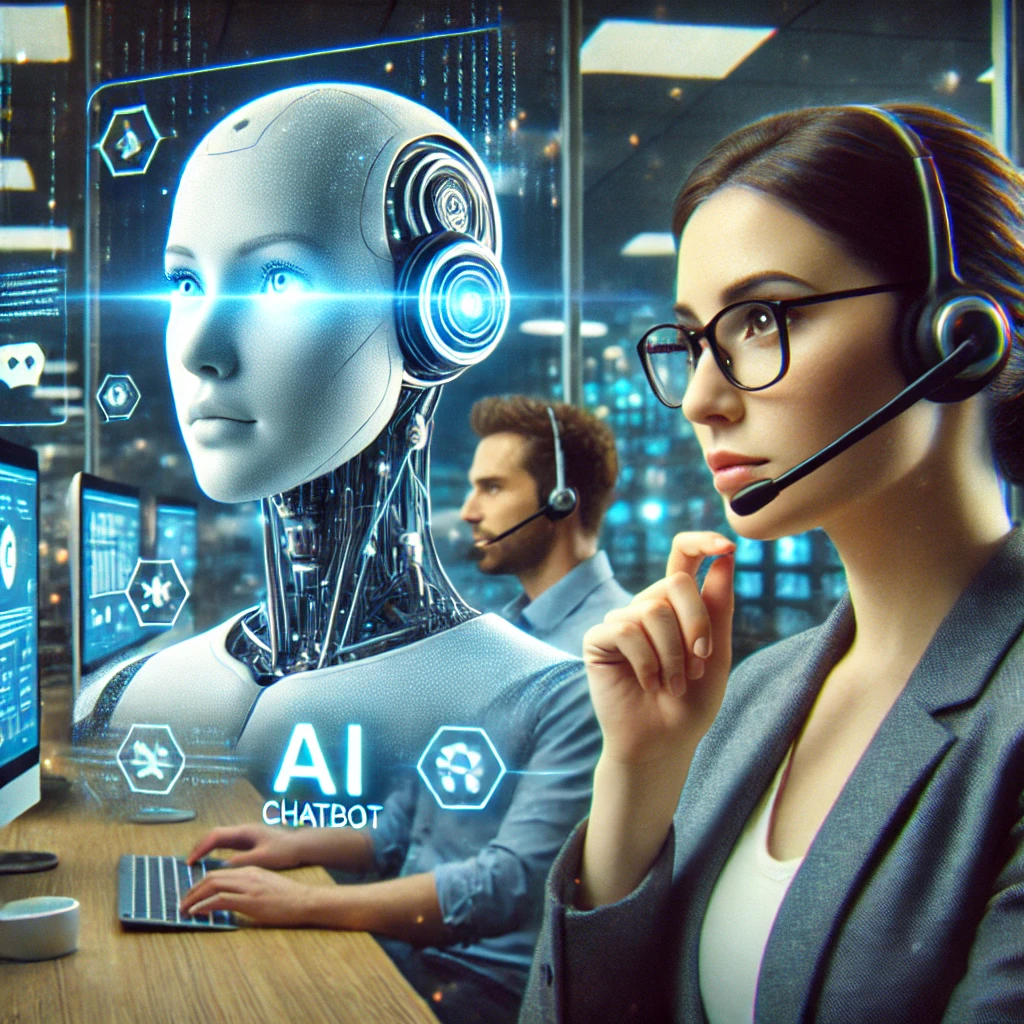The rise of Artificial Intelligence (AI) has transformed various industries, including customer service. Businesses are increasingly adopting AI chatbots to handle customer inquiries, but human customer support remains an essential part of the service experience. While chatbots provide efficiency and cost savings, human agents bring emotional intelligence and personalization. This blog explores the pros and cons of AI-powered chatbots and human customer support, helping businesses determine the right balance between the two.

AI Chatbots: Pros and Cons
Pros of AI Chatbots
1. 24/7 Availability
Chatbots can operate round the clock, ensuring customers receive instant responses at any time of the day or night. This is particularly beneficial for global businesses catering to customers in different time zones.
2. Cost-Effective
Deploying chatbots reduces labor costs associated with hiring, training, and maintaining a large customer support team. Businesses can handle more queries without significantly increasing operational expenses.
3. Instant Responses and Efficiency
AI chatbots can process and respond to customer inquiries within seconds, improving response time and efficiency. They can handle multiple queries simultaneously, eliminating long wait times.
4. Consistency in Responses
Chatbots provide standardized and accurate information, ensuring customers receive consistent responses without human errors or variations in tone.
5. Scalability
Businesses experiencing high customer traffic can scale chatbot operations easily, accommodating thousands of users simultaneously without a decline in service quality.
6. Multilingual Support
Advanced AI chatbots can communicate in multiple languages, making customer support accessible to a diverse audience without requiring multilingual human agents.
Cons of AI-Powered Chatbots
1. Limited Understanding of Complex Queries
Despite advancements in Natural Language Processing (NLP), chatbots still struggle to comprehend complex or nuanced customer issues. They may provide generic responses that fail to address specific concerns.
2. Lack of Emotional Intelligence
Chatbots lack empathy and emotional intelligence, which are crucial for handling sensitive situations such as customer complaints, disputes, or emotional distress.
3. Inability to Handle Unique Requests
AI chatbots rely on pre-programmed data and may fail to handle unique or uncommon inquiries that require human judgment and flexibility.
4. Potential for Frustration
Customers may become frustrated when dealing with chatbots that fail to provide relevant answers or continuously loop generic responses without escalating issues to a human agent.
5. Security and Privacy Concerns
While AI chatbots handle sensitive customer data, there is always a risk of data breaches or mishandling of personal information if security measures are not robust.
Human Customer Support: Pros and Cons
Pros of Human Customer Support
1. Personalized Service
Human agents can tailor responses to individual customers, addressing their specific concerns and providing a more personalized experience.
2. Emotional Intelligence and Empathy
Humans can understand and respond to customer emotions, showing empathy, patience, and care—qualities that chatbots lack.
3. Ability to Handle Complex Issues
Unlike chatbots, human agents can think critically and use problem-solving skills to resolve complicated issues that require judgment and flexibility.
4. Higher Customer Satisfaction
Customers generally feel more valued and understood when speaking to a human representative, leading to better satisfaction and brand loyalty.
5. Improved Conflict Resolution
In cases of disputes, refunds, or complaints, human agents are better equipped to de-escalate situations and negotiate solutions that satisfy both the customer and the business.
Cons of Human Customer Support
1. Higher Costs
Hiring, training, and maintaining a human customer support team is expensive. Salaries, benefits, and infrastructure add to the operational costs.
2. Limited Availability
Unlike chatbots, human agents cannot provide 24/7 support without shift-based workforces, which may be costly and inefficient for some businesses.
3. Slower Response Times
During peak hours, human agents may struggle to handle multiple queries simultaneously, leading to longer wait times for customers.
4. Variability in Service Quality
Unlike chatbots that provide consistent responses, human agents may differ in experience, knowledge, and tone, leading to inconsistencies in service quality.
5. Language Barriers
For businesses operating globally, hiring multilingual customer support teams can be challenging and expensive compared to chatbots that can instantly translate and respond in different languages.
Finding the Right Balance: AI Chatbots + Human Support
Instead of choosing between AI chatbots and human customer support, businesses can integrate both to optimize efficiency and customer satisfaction. Here’s how:
- Use Chatbots for Basic Inquiries: AI chatbots can handle common questions, FAQs, and basic troubleshooting, reducing workload on human agents.
- Enable Seamless Handoff to Humans: When chatbots encounter complex issues, they should transfer customers to a human agent smoothly.
- Leverage AI to Assist Human Agents: AI can provide customer history, sentiment analysis, and recommended responses to human agents, enhancing their efficiency.
- Provide a Hybrid Approach: Businesses can offer both chatbot and human support, allowing customers to choose their preferred method.
- Monitor and Improve AI Performance: Regularly update chatbot algorithms with new data to enhance accuracy and responsiveness.
Conclusion
AI-powered chatbots and human customer support both have their strengths and weaknesses. Chatbots offer efficiency, cost savings, and scalability, while human agents provide emotional intelligence, personalization, and complex problem-solving. Instead of replacing one with the other, businesses should aim for a hybrid model that leverages the strengths of both. By combining AI’s efficiency with human empathy, companies can create a customer support experience that is both seamless and satisfying, ultimately improving customer loyalty and brand reputation.
